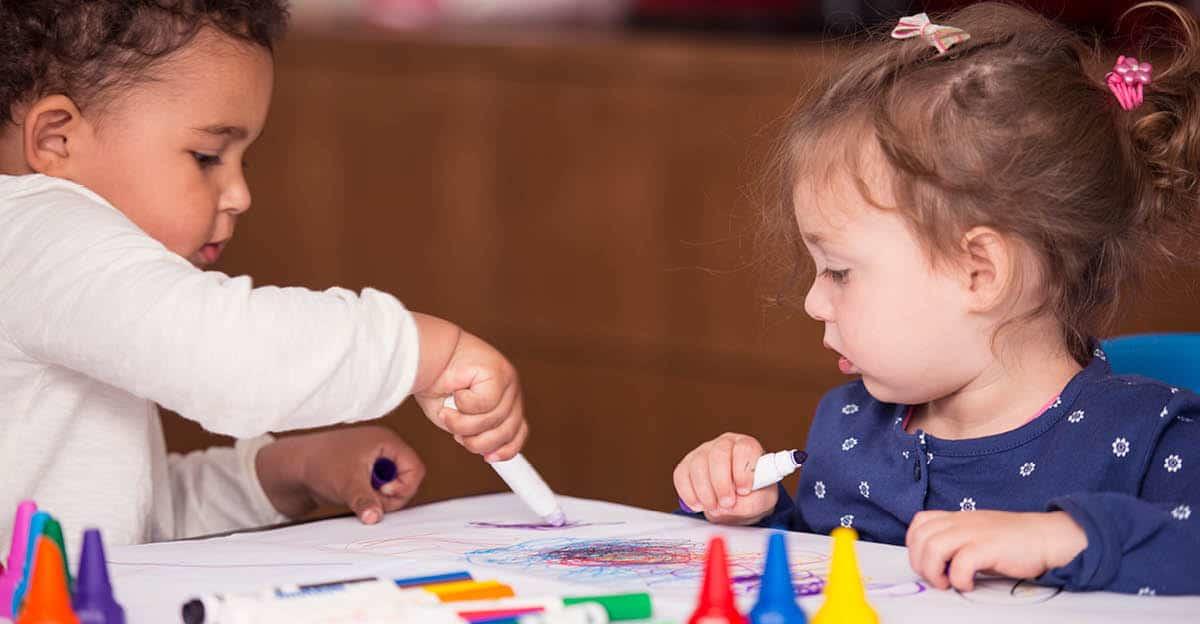It is no surprise to early educators that the experiences and interactions young children are exposed to have a significant effect on a child’s chances for life-long success. Informed by the latest advances in neuroscience, we know that synapse connections develop at an accelerated rate in the first five years of life. Fostering 21st century learning skills with our youngest learners takes on importance for all of us. How a child learns to think and problem solve in the earliest years not only affects that individual child and their family, but sets the course for what kind of world we will all live in. Will there be a cure for cancer? Can we eradicate world hunger? The answers may be just starting to percolate in today’s early childhood classrooms.
Technology and Early Childhood Learning
So why 21st Century Safe Schools? For many, the term “21st Century Schools” brings to mind the rapid advancements in technology that has stretched our ability to access and represent information. The availability of technology has significant impact on how children learn and how teachers teach. There is no question that this has changed the face of education today by broadening the horizons of educators and students alike. Today’s children can reach out far beyond their schools and communities to gain an understanding of a world beyond the imaginations of previous generations. Technology is a valuable tool, but how our children utilize technology is shaped by what has been referred to as the “Softer Skills”. The Partnership for 21st Century Learning (P21) identifies the 4Cs of collaboration, communication, critical thinking and creativity as those skills that will most significantly impact the future success of today’s children.
Safety to Explore and Create in Early Childhood
Providing safe schools takes on significant importance today. The need for safety and security is heightened in our littlest learners. Our children need to feel safe and secure before they can move forward and learn. Beyond physical safety, which, of course, we all want for our children, young children need to feel safe emotionally and socially. This forms a secure base on which they can build those 4Cs. Within an early childhood classroom, children begin that important process of navigating social interactions, developing empathy, and managing their emotions though interactions with other children. Good teachers supervise to ensure children’s safety while knowing when to step back and allow children to problem solve. Teachers and parents that encourage children to work together and verbalize their thoughts and ideas are building the foundation of communication and collaboration skills in our next generation of leaders. The safety of play is a place to begin to use language to communicate and manage emotions. Children who are not in control of their emotions, or cannot navigate social interactions, can feel out of control and those ever-important synapse in the brain can’t fire when young children do not feel safe and in control.
What about the other two Cs: creativity and critical thinking skills? Years in the classroom with preschoolers and kindergarteners leave no doubt in my mind that young children that have been nurtured and encouraged to find answers and explore possibilities bring a great deal of creativity to their invented play and mastering the world around them. Critical thinking-exploring possibilities through hands-on exploration- is the world of the young child. We often associate creativity with painting at an easel or moving to music. These activities bring to mind happy children. They also allow children to take control. Within the bounds of safety, there is not a wrong way to finger paint and the child controls the result!
How Early Childhood Creativity Becomes Innovation
When we offer young children art materials to explore and experiment with, without requiring them to make a preconceived product, we open the door for creativity and critical thinking to develop. Because there is not one ‘right answer’, young children can take control and try out different ways of doing things. Making mistakes is part of that creative process. A world filled with worksheets with prescribed answers will not ignite the synapse in the brain the way the challenge of turning a refrigerator box into a space station will.
To a child, the world is filled with endless possibilities. They learn through art what will work and what won’t. Because there is not one right answer, art presents an opportunity to be creative problem solvers or “Risk Takers” and meet challenges in new ways. A majority of young children will most likely NOT grow up to be the next Picasso, but being exposed to appropriate art experiences from the earliest years promotes divergent thinking skills-valuable for future scientists, mathematicians, engineers, inventors and roles that will emerge in a world we cannot yet envision.
In the world of early childhood, a young child’s art –or creations- have long reached beyond the confines of a flat surface to sand castles on the beach or mud pies in the back yard. Today, we see a growing emphasis on makerspaces where children are provided the materials to engineer and build three-dimensional solutions. Providing many opportunities for drawing and painting is a good thing for our young 21st century learners but providing access to an assortment of materials and the freedom for safe exploration and invention will spark creative thinking and problem solving.
Fosting a Safe Environment for Creativity
Of course, fostering creativity and problem-solving skills extends beyond the art center in early childhood classrooms. Young children are also developing these skills when they discover how to make a block tower or invent a way to navigate a playground puddle after a rainstorm. The early childhood classroom is filled with opportunities to foster creative confidence from the earliest years.
Creative confidence is essential to innovation. The future prosperity of our nation certainly depends on a workforce proficient in the latest technology and with a solid understanding of science, engineering and mathematics, but what can set us apart is the ability to:
- See things in new ways
- Discover how to create something new.
- Think unconventionally
- Combine things in new ways
To have a lasting effect on tomorrow’s creative problem solvers, early childhood educators know that a very important component of their work is partnering with parents. Helping families to understand the important role they play in fostering creativity and problem solving skills may mean encouraging parents to step back and let young children discover a solution on their own. Caring adults can be the secure base and a child’s safety net without providing all the answers before a child has an opportunity to problem solve. Encourage families to provide open ended materials; scrap paper, mark makers ,blocks rather than games with one right answer.
Whatever role we play in the world of young children, we need to nurture a “creative confidence” within safe learning environments to build those important 21st Century Skills of collaboration, creativity, critical thinking and creativity: A foundation for a bright future.
Ginny Streckewald
Ginny Streckewald, M. Ed., holds a Masters’ degree in Specialty Education focusing on Early Intervention. She has over 35 years of inclusive teaching experience with young children, and has worked closely with premature and developmentally delayed infants and toddlers. Read more posts by Ginny Streckewald –>







Leave a Reply